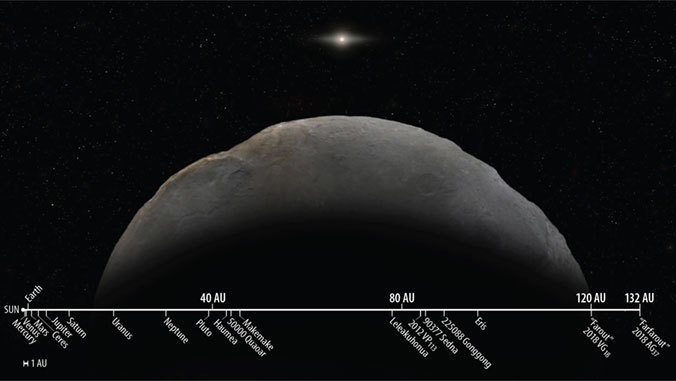For a long time, Pluto was the farthest object we knew about in the solar system, but it’s a cosmic stone’s-throw away compared to more recent discoveries. Now astronomers have confirmed what is currently the most distant world of all – the appropriately named Farfarout.
Provisionally designated 2018 AG37, Farfarout is an astonishing 132 Astronomical Units (AU) from the Sun, or almost 20 billion km (12.4 billion miles). For reference, Earth is 1 AU from the Sun, and even Pluto only gets to about 49 AU at its furthest. Farfarout also pips more recently discovered worlds like Farout, which now sounds positively close at “only” 124 AU, or the Goblin, which is currently 80 AU away.
Interestingly though, it may be the farthest known object in the solar system right now, but despite its name Farfarout doesn’t always hold the crown. It’s on an extremely eccentric 1,000-year orbit that swings it out to about 175 AU, and even that’s not the record, paling in comparison to the Goblin’s incredible 2,300 AU maximum distance. At its closest, Farfarout comes in to a mere 27 AU – that’s nearer to the Sun than Neptune.

Roberto Molar Candanosa, Scott S. Sheppard from Carnegie Institution for Science, and Brooks Bays from University of Hawaii
“Farfarout was likely thrown into the outer solar system by getting too close to Neptune in the distant past,” says Chad Trujillo, an author of a study describing the find. “Farfarout will likely interact with Neptune again in the future since their orbits still intersect.”
Farfarout was first discovered back in January 2018 by astronomers using the Subaru Telescope, but its exact distance couldn’t be determined. Being so far (far) out, the object is incredibly dim and moves very slowly across the sky. Further observations were needed to track its path and figure out its size.
In doing so, astronomers estimated that it’s about 400 km (250 miles) wide, which is much smaller than any officially recognized dwarf planet. Further study will be conducted to help determine its orbit and other characteristics more clearly.
And eventually, it will be given a more serious name than Farfarout and a less dry one than 2018 AG37.
Source: NOIRLab, University of Hawaii
Source of Article